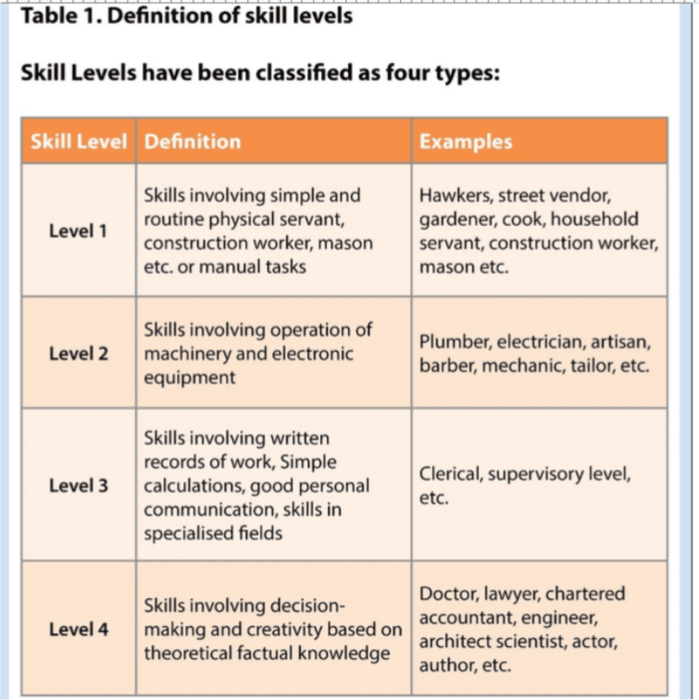India needs an urgent data-driven strategy to plug skill gaps
News Excerpt:
India's rapidly growing youth population presents both opportunities and challenges for its economic aspirations.
India’s Demographic Dividend:
- The demographic dividend presents a growth opportunity, requiring workforce skills aligned with global economic demands.
- World Bank data shows a concerning trend: India’s labor mobilization rates have fallen from over 70% in 1990 to 56% in recent years. This represents an alarming weakness in India’s economy and threatens to undermine its demographic advantage.
- As India strives to position itself as a global economic powerhouse, its ability to transform this demographic bulge into a dividend through skill development and labour market reforms is critical.
- A skilled and educated workforce is critical for increasing productivity, fostering innovation and attracting investment, all of which in turn contribute to enhancing national competitiveness.
Workforce Skill Level Analysis:
- An analysis of the Periodic Labour Force Survey (PLFS) data provides more insights into the skill level of the Indian workforce.
- Data indicates that workforce growth rates differ across skill levels, highlighting shifts in the composition of India's skilled workforce and its impact on overall competitiveness.
-
- It also showed a disturbing trend: a declining growth rate of highly skilled individuals (skill levels 3 and 4).
- Between 2017 and 2022, the growth rate for these skill levels fell by more than 5 percentage points in at least 22 of India’s 36 states and Union territories.
- States such as Sikkim, Karnataka, Nagaland, Uttar Pradesh, West Bengal and Goa have had an over 10-point fall in the growth rate of their highly trained workforce.
- On the positive side.
- The semi-skilled workforce (skill level 2) has grown significantly, with a national compounded annual growth rate of 59.5% between 2017-18 and 2022-23.
- More than 45% of the workforce across states falls into this category, showing a growing demand for individuals with intermediate-level abilities.
- The Pradhan Mantri Kaushal Vikas Yojana (PMKVY) has made a substantial contribution to this positive trend by offering skill training and certification.
- During the same period, skill level 1, which comprises low-skilled workers, increased by 24.8%.
- This tendency indicates a continuous reliance on skilled labour across industries, potentially driven by construction, manufacturing or services.
- On the Negative Side: Despite progress, PLFS data shows many workers aged 15 to 59 lack formal vocational or technical training.
- The proportion has dropped from 91.9% in 2017-18 to 72.6% in 2022–23, it still indicates a major gap in formal skill development for a sizable segment of the Indian workforce.
- The PLFS statistics suggest that semi-skilled and low-skilled workers are likely to dominate the workforce,
- The growth of high-skilled workers lags. This may have implications for India’s competitiveness.
Rural-Urban skill Disparities:
- On average, rural regions have much lower skill intensity than their metropolitan counterparts.
- In India, metropolitan districts host skill-intensive trade clusters.
- Cities such as Mumbai, Bangalore, Delhi and Hyderabad have evolved as centers for IT services, financial services and other knowledge-intensive businesses.
- These industries often require a higher number of skilled individuals such as software engineers, data analysts and financial professionals.
- As a result, these urban zones naturally attract a more skilled workforce.
- In contrast, rural districts specialize in agriculture, small-scale manufacturing and traditional crafts, which typically demand a smaller number of highly qualified people.
- The presence of these businesses in rural areas helps explain the observed lower skill intensity.
- Addressing this disparity necessitates not only skill development, but also the establishment of skill-intensive clusters in rural areas, which may result in more balanced growth across India.
Way Forward
- The government has aimed to address this through its Skill India Mission, which resulted in expansion of the skill level 2 workforce. But more coordinated efforts are required by state governments.
- Andhra Pradesh proposed a 'skill census' to assess current skills across regions and sectors.
- If adopted by other states, it could promote competitive federalism by utilizing detailed data.
- By mapping the current skill landscape, policymakers can identify areas experiencing skill shortages and develop focused strategies accordingly.
- State governments can create specialized skill-building programmes to address the demands of their unique workforces and industries.
- This data-driven strategy can result in improvements in skill-development projects. By addressing the talent gap through targeted measures, India can realize the full potential of its demographic dividend.
Conclusion:
- The road ahead for India’s skill development efforts is difficult, but the rewards are significant. By investing in human capital and utilizing data-driven initiatives, India can turn its demographic advantage into a meaningful economic dividend. A skilled and productive workforce will not only drive innovation and increase productivity, it will also significantly contribute to the overall competitiveness of the nation, accelerating India’s journey towards becoming a developed economy by 2047.
|
Beyond Editorial:
Pradhan Mantri Kaushal Vikas Yojana (PMKVY)
Objectives of PMKVY 2016-20
|



